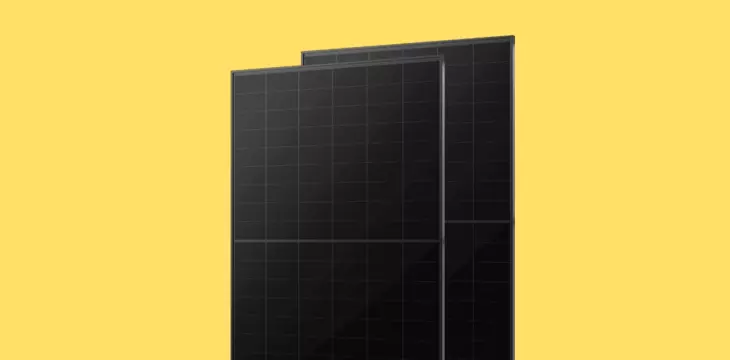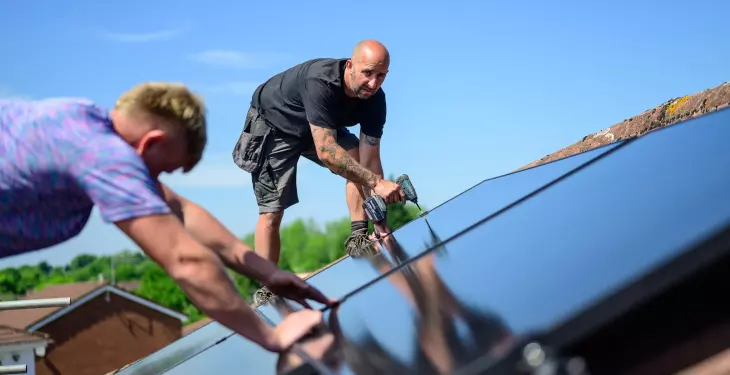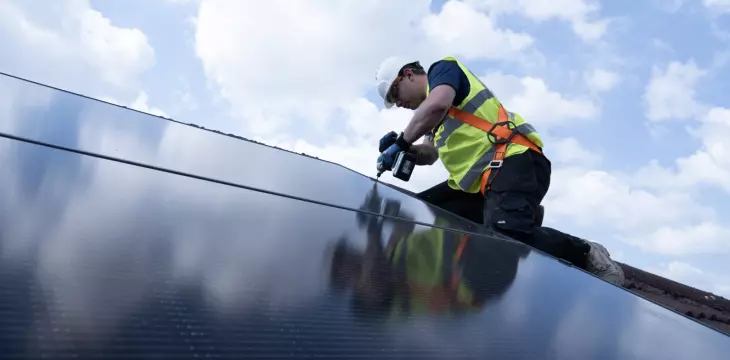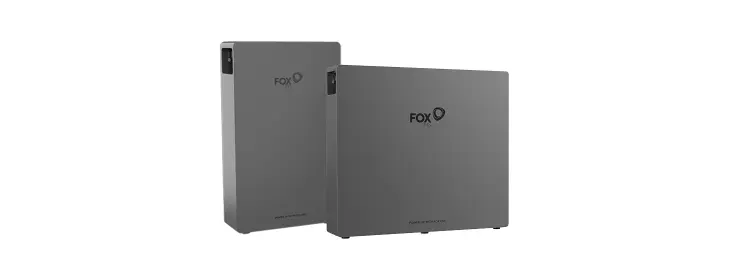

Written by Bethany Armstrong
Renewables Manager
Updated: 20th October, 2025
Each type of solar has different benefits, making some better suited to certain homes than others.
See how much you could save with a solar & battery quote.
Choosing the right solar panels in the UK in 2025 can feel overwhelming with so many types now available, from traditional silicon panels to newer options like perovskite and solar tiles. Each type comes with its own balance of cost, efficiency, and lifespan, making it important to match the technology to the needs of the home. The best solar panel depends on budget, roof space, and energy goals.
Some households may benefit most from high-efficiency monocrystalline panels, while others with larger roof areas might find polycrystalline or thin film panels more practical. For those focused on design, solar tiles offer a discreet option, while solar thermal panels remain the top choice for heating water. With new technologies emerging, it has never been easier to find a system that fits both performance and style.
By comparing the main types of solar panels side by side, it becomes clear which options are already widely available and which are still in development. This helps homeowners make informed decisions that balance upfront costs with long-term savings.
Solar panels are devices that capture sunlight and convert it into usable energy. Most panels use photovoltaic (PV) cells to generate electricity, while some systems, such as solar thermal panels, produce heat instead. Both forms support the wider move towards renewable energy.
A solar panel’s performance is measured by its output, usually in watts. The actual amount of electricity generated depends on factors such as panel efficiency, roof angle, shading, and local sunlight levels. In the UK, panels continue to produce energy even on cloudy days, though output is lower compared to summer months.
There are several types of solar panels available today, each with different strengths:
Monocrystalline: High efficiency, long lifespan.
Polycrystalline: Lower cost, moderate efficiency.
Thin film: Flexible, lightweight, but less efficient.
Solar thermal: Designed for heating water rather than electricity.
Type | Typical Efficiency | Common Use Case |
Monocrystalline | 18–24% | Homes with limited roof space |
Polycrystalline | 13–16% | Larger roofs, lower upfront cost |
Thin film | 7–13% | Mobile homes, sheds, curved roofs |
Solar thermal | ~70% (heat only) | Water heating systems |
By converting sunlight into electricity or heat, solar panels reduce reliance on fossil fuels. They allow households to generate a portion of their own energy, lowering bills and supporting the UK’s renewable energy goals.
Homeowners in the UK can choose from several types of solar panels in 2025. Each option has different levels of efficiency, durability, and cost, making some better suited to certain homes than others.
Type | Cost per m² (avg) | Efficiency | Lifespan |
Monocrystalline | ~£350 | 18–24% | 25–40 yrs |
Polycrystalline | ~£280 | 13–16% | 25–30 yrs |
Thin-film | ~£99 | 7–13% | 10–20 yrs |
Solar tile | ~£294 | 10–20% | 25–30 yrs |
Transparent | ~£250 | 1–10% | 25–30 yrs |
PERC | ~£360 | 17–20% | 25–35 yrs |
Monocrystalline solar panels use single-crystal silicon, offering high efficiency (18–24%) and long lifespans of up to 40 years. They look sleek but are also the most expensive standard option.
Polycrystalline solar panels are cheaper to buy, with an average efficiency of 13–16%. They are less efficient than monocrystalline, so more roof space is usually needed.
Thin-film solar panels are lightweight and flexible, with costs starting lower than silicon panels. However, their efficiency (7–13%) is much lower, and lifespans are shorter at 10–20 years. They work well for sheds, mobile homes, or roofs where weight is a concern.
Solar tiles integrate into the roof, blending in visually. They cost more than traditional panels and usually require a full roof replacement. Efficiency is moderate (10–20%).
Transparent solar panels can be used on windows or glass structures. While they allow light through, their efficiency is low (1–10%) and costs remain high, limiting their use in homes.
PERC (Passivated Emitter and Rear Contact) panels improve on standard silicon panels by reflecting unused light back into the cell. They reach 17–20% efficiency but are being replaced by newer technologies.
Whether a home is suited to solar panels depends on a few practical factors. Roof angle, shading, and orientation all affect how much sunlight panels can capture. In the UK, a south-facing roof usually gives the best results, but east- or west-facing roofs can still perform well.
The size of the roof also matters. A larger roof can fit more panels, which helps generate more electricity. Homes with limited space may need higher-efficiency panels, such as monocrystalline, to make the most of the area available.
Roof type plays a role in installation. Tiled roofs are usually straightforward, while slate or flat roofs may need extra mounting equipment. Weight limits should also be checked before installation begins.
Shading from trees, chimneys, or nearby buildings can lower output. Even partial shading can reduce performance, though micro-inverters or power optimisers can help by allowing each panel to work independently, rather than relying on a single central solar inverter.
Before moving forward, homeowners often request several solar panel quotes. Comparing quotes from local installers helps identify the most cost-effective system and ensures the right balance between price, efficiency, and expected lifespan.
A simple checklist can help assess suitability:
Factor | Good for Solar? |
South-facing roof | ✔ Best option |
East/West-facing | ✔ Still works |
Heavy shading | ✘ Reduces output |
Large roof space | ✔ More panels possible |
Tiled roof | ✔ Easy to install |
A professional solar panel installation survey is the most reliable way to confirm if a property is ready for solar. This assessment checks roof strength, wiring, and inverter placement to ensure the system runs safely and efficiently.
The best solar panels for a home depend on roof size, budget, and energy goals. Each type of panel offers different strengths in terms of efficiency, cost, and appearance.
Monocrystalline panels are often chosen for homes with limited roof space. They provide higher efficiency (18–24%) and longer lifespans but usually cost more. Their sleek black look also appeals to many homeowners.
Polycrystalline panels are cheaper and slightly more eco-friendly to produce. They have lower efficiency (13–16%), so they suit larger roofs where space is not an issue.
Thin film panels are lightweight and flexible. They are less efficient (7–13%) but can work well for sheds, garages, or mobile homes. Their lower cost per panel makes them attractive for certain setups.
Solar tiles blend into the roof and are best for those who value aesthetics. However, they are more expensive and usually less efficient than standard panels.
PERC panels improve on traditional silicon panels by reflecting light back into the cell. They typically reach 17–20% efficiency and are still widely available, though newer technologies may replace them over time.
Panel Type | Efficiency (%) | Lifespan (years) | Typical Use Case |
Monocrystalline | 18–24 | 25–40 | Small roofs, high efficiency |
Polycrystalline | 13–16 | 25–30 | Larger roofs, lower cost |
Thin film | 7–13 | 10–20 | Flexible, mobile setups |
Solar tiles | 10–20 | 25–30 | Aesthetic roofs |
PERC | 17–20 | 25–35 | Efficient upgrades |
Last updated: 20th October, 2025

Written by Bethany Armstrong
Renewables Manager at iHeat
Bethany Armstrong is a renewables expert and operations manager at iHeat, specialising in heat pump solutions and solar project delivery across the UK.
LinkedInArticles by Bethany Armstrong are reviewed by iHeat’s technical team to ensure accuracy and reliability.

19th November, 2025
Most UK homes take one to two days for solar panel installation, with the full process fro...
 Read Article
Read Article

14th November, 2025
In this guide we compare key panel types and specs for UK homes, outline typical installed...
 Read Article
Read Article

14th November, 2025
Your ideal solar battery size depends on your energy use and solar setup. This guide cover...
 Read Article
Read Article
No obligation. Takes less than 60 seconds.